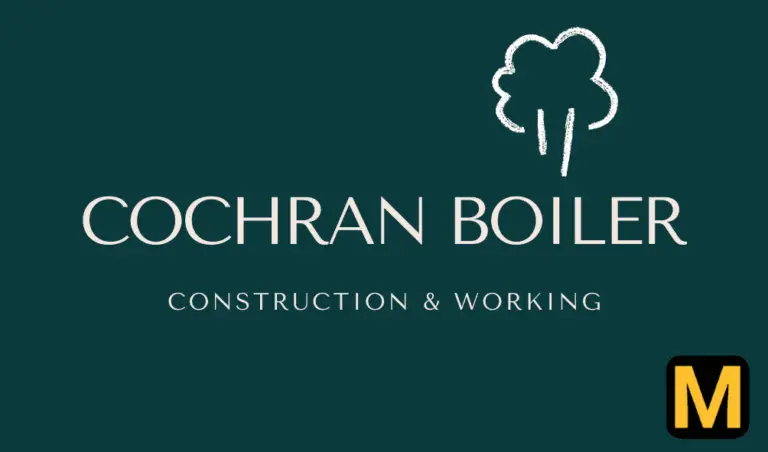Nuclear power plant – construction, working, advantages with PDF
This is The Mechanical post and today you will be reading in this article about:
What is a nuclear power plant?
What is meant by nuclear fission?
What are control rods, fuel rods, and moderators?
Construction of nuclear power plant
Working of nuclear power plant
Advantages of nuclear power plant
Limitations of nuclear power plant
You can download your copy of the PDF on the Nuclear power plant at the end of the article.
Introduction
Nuclear power plants have a bunch of good things up their sleeve, like it does not produce greenhouse gases, has a very low carbon footprint, and many more…
What is a nuclear power plant?
A nuclear power plant is a type of power plant which produces electricity with the heat generated by the nuclear fission reaction in the nuclear reactor. This heat is then used to convert water into steam which is then used to drive the turbine, eventually generating electric power.
A nuclear power plant is similar to a steam power plant except that in place of a boiler a nuclear reactor is used to generate steam.
Before starting off with the construction and working of the nuclear power plant, let’s understand the nuclear fission process which takes place in the nuclear reactor.
What is meant by nuclear fission?
Nuclear fission is the process in which a heavy nucleus like Uranium or Plutonium is split into lighter nuclei of approximately equal mass along with the release of a large amount of energy.
The Uranium 235 on itself is a stable atom, however, when hit with a neutron the Uranium 235 atom absorbs the neutron and becomes Uranium 236 which is unstable, and thus, it spontaneously splits into Krypton 92 and Barium 141.
This reaction results in the release of 3 neutrons along with a large amount of energy (i.e. 1MeV). These 3 neutrons further hit the other Uranium 235 atoms and the chain reaction goes on.
It is necessary that the chain reaction must be controlled or else an accident might occur. In nuclear a reactor control rods and moderators are present for a controlled reaction to take place.
So what are Fuel rods, control rods, and moderators?
Did you know?
A complete fission of 1 kg of Uranium is equivalent to 2.7 million kg of Coal
– source European Nuclear society (https://www.euronuclear.org/)
Construction of nuclear power plant
- Nuclear reactor
- Heat exchanger / Steam generator
- Steam turbine
- Alternator / Generator
- Condenser
- Cooling tower
 |
| Nuclear power plant image source – U.S.NRC., Public domain, via Wikimedia Commons |
Nuclear reactor
The nuclear reactor consists of the reactor core within which the fuel rods, control rods, and the moderator are present.
There are two basic types of nuclear reactors:
1. Boiling water reactor (BWR) – In the BWR the feed water is allowed to boil in the reactor itself and is converted into steam. This steam is then directly passed through the steam turbine to produce electrical energy.
The BWR has a disadvantage which is that the water comes directly in contact with the fuel rods, thus there may be a possibility of the water carrying radioactive particles.
2. Pressurized water reactor (PWR) – In the PWR as the name suggests, the water in the reactor is pressurized so that it doesn’t convert into steam. This water is used to absorb the heat and deliver it to the feed water in a heat exchanger.
Heat exchanger / Steam generator
Steam turbine
Alternator / Generator
Condenser
Cooling tower
Working of Nuclear power plant
This heat is then transferred to the coolant. The coolant is then passed through the heat exchanger where it gives up the heat to the feed water, resulting in the conversion of water into saturated steam.
Then, the steam generated is sent to the steam turbine where it is allowed to expand. The expansion causes the steam turbine to rotate.
Since the steam turbine is coupled to the alternator / generator the rotational energy of the turbine is converted into electrical energy.
The energy produced is then stepped up with the help of a transformer and then transmitted to the load centers.
The steam which exits the turbine is sent to the condenser where it is converted into water and is pumped back to the heat exchanger/steam generator where it is again converted into steam and the cycle goes on…
You might also like to read:
- Gas turbine power plant construction and working
- Lamont boiler – construction and working
- Vapour compression cycle – detailed explanation
- Best laptops for Mechanical engineering students in India
Advantages of Nuclear power plant
- The nuclear power plant produces isotopes that have different applications.
- Nuclear power plants do not produce greenhouse emissions as compared to other conventional power plants.
- Nuclear power plants are more reliable.
- Since a very small quantity of uranium is required, fuel transportation and storage is not a problem.
- Operating costs are less.
Disadvantages of Nuclear power plant
- The initial capital cost is high.
- The used fuel is highly radioactive. Thus, special processes are required for its disposal.
- Also, the waste products from the plant must be treated before disposing off.
- High maintenance cost.
- As compared to fossil fuels, uranium is found in some countries and has a lot of regulations regarding its use.





